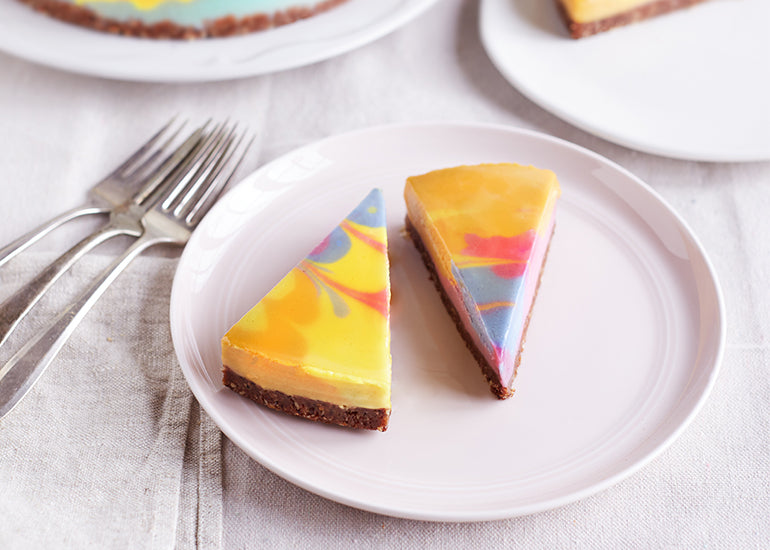Pink frosted cupcakes. Bright green smoothies. Bubbly blue cocktails. And, of course, the bright, festive eggs that adorn baskets annually during this time of year. Who doesn’t love the lure of vividly colored foods?
Using colors to enhance the visual appeal of our foods is nothing new, but that’s not to say all of our modern applications have been exactly what you’d call a smooth process. Though natural, plant-based dyes have been used for millenniums around the world, it’s synthetic hues that have dominated our modern food industry as an inexpensive means to produce bright, consistent colors. This pervasive artificial usage is certainly not without controversy: from the Food and Drug Administration pulling an orange Halloween candy from the shelves after children became sick in 1950, to the more current acknowledgment that many previously approved color additives have, in the FDA’s words, “serious adverse effects” (and have been linked to hyperactivity in children).
The good news is, thanks to an uproar of consumer complaints, many manufacturers are taking note by now using plant-based dyes extracted by fruits and vegetables instead. Even better, these natural colors are nothing more than the condensed antioxidants of a plant, giving us a bit of nutritional gain in addition to an enchanting aesthetic. And perhaps best of all, these hues can easily be created at home, using truly beneficial superfoods. So, the next time you’re craving color, leave the food dyes on the shelf, and make the rainbow with exemplary superfoods instead! Here’s how:
Purple
There’s a much-talked-about name for purple hues, known as anthocyanins – aka the “purple” antioxidants we see in dark-colored foods. Lots of superfoods contain anthocyanins, from black rice to acai berries! For dying foods, some of the best superfood options to really get that purple glow include the juice of blueberries and blackberries, as well as super high potency maqui powder.
Blue
True blue is a very rare color in the natural, edible color wheel. Even “blueberries” are actually more of a purple than a blue. Nevertheless, the blue antioxidant phycocyanin does exist, and is very potent in one of the world’s best superfoods: spirulina. For the easiest application, use a blue spirulina, which you can buy online or at specialty stores. The color will blow your mind, and a little goes a very long way!
Green
Especially for dying foods, green is an easy color to create, thanks to the abundant amount of chlorophyll-rich superfoods. Blend in spinach or Superfood+ Greens Blend to create warm, light greens without affecting flavor, or use straight liquid chlorophyll for cooler, darker shades.
Yellow
One of the most historical ways to make yellow with superfoods is to use organic turmeric powder or juice. Thanks to an abundance of curcumin, a bright yellow compound, turmeric quickly adds a golden color to anything it’s added to, just barely swaying the flavor.
Orange
When trying to create orange, it’s all about finding foods with high concentrations of carotenoid antioxidants like lycopene. While some people may immediately think of carrots or tomatoes, a much more versatile and condensed superfood variety is goji berries. Goji berry powder can be easily whisked into a variety of foods, quickly creating a warm color. A second alternative is a little ground paprika.
Red
Red hues are perhaps the hardest to achieve naturally. Superfoods may not produce the same vibrant red as a “#5 dye,” but they’ll at least create a stunning pink. Using the ground powder of freeze-dried (or juice of fresh) strawberries and raspberries makes for a solid pink dye, and mixing in some beet juice will create a stunning fuchsia.
While superfood dyes will not fade once they're added in proper conditions, they do have their limits: most are affected by heat as well as acidity (which will diminish or change their color). These natural hues are best used in lightly colored foods that do not need to be heated and are best suited in mixed dessert recipes such as cake frostings, ice creams, cheesecakes, and smoothies. Take advantage of the beautiful natural rainbow in superfoods and enjoy the nutritional bonuses!
)

